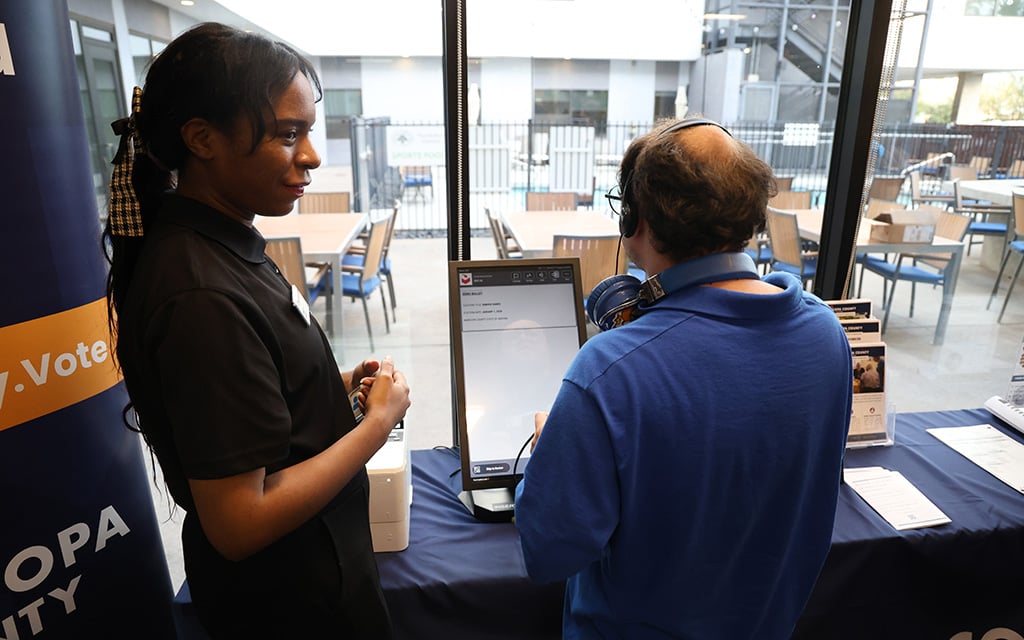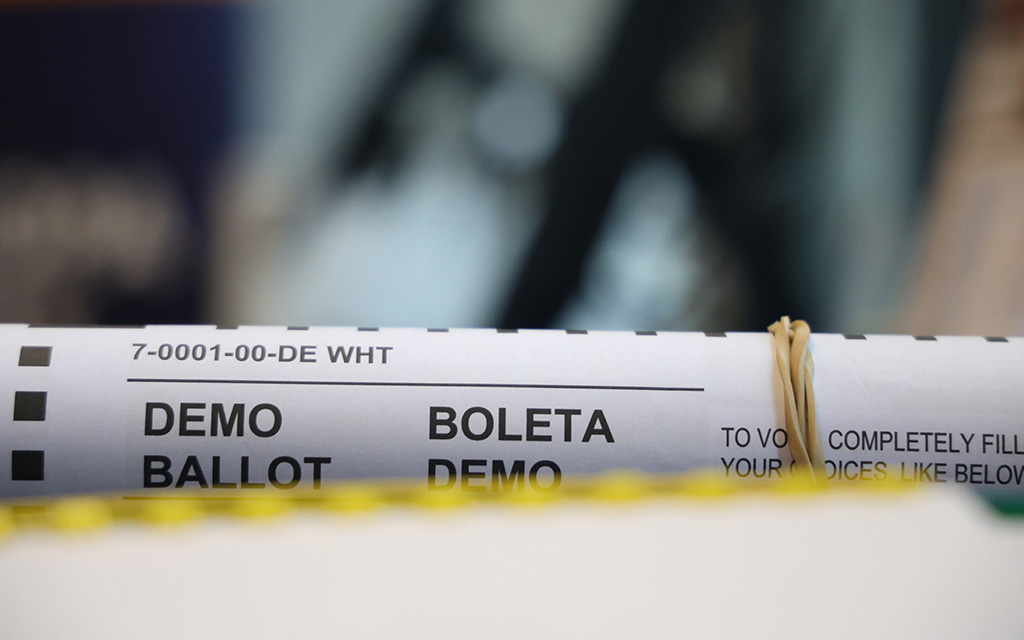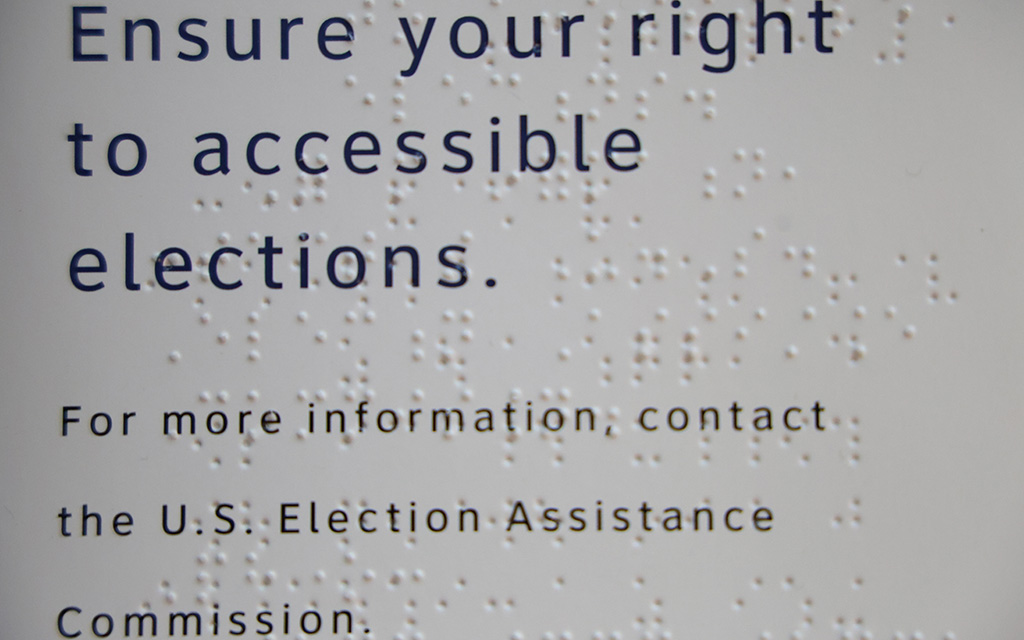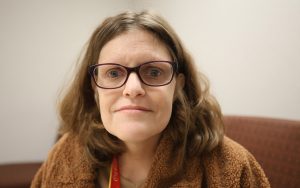
Angelica Bland teaches Isaac Bravo how to use an ICX voting machine during a mock election event on Feb. 27. (Photo by Jack Orlins/Cronkite News)

A sample ballot for people with disabilities sits on a table next to other voting materials on Feb. 27. (Photo by Jack Orleans/Cronkite News)

Signs at the Feb. 27 mock election event provided information about where to vote and how to vote. (Photo by Jack Orleans/Cronkite News)

Braille signs informing blind voters about their rights are displayed during a mock election event on Feb. 27. (Photo by Jack Orleans/Cronkite News)
PHOENIX – A mock election to support voters with various physical and mental disabilities was held Feb. 27 by the Maricopa County Recorder of Elections Office and Vote The Spectrum, an initiative launched by a Phoenix nonprofit to register 10,000 people with autism and intellectual and developmental disabilities.
“We’ve registered 250 people to vote as of today, which means a lot more people are going to be voting,” said Monica Murray, commissioner of the Maricopa County Special Election Commission.
These committees serve people whose various disabilities make it difficult for them to vote.
“250 may not be a big number compared to the millions of voters out there, but to me, that’s 250 people who didn’t vote,” Murray said.
The mock election took place at First Place Phoenix, a housing complex that caters to neurodiverse people. The organizers’ goal was to encourage neurodiverse and disabled people to vote, as their voices matter.
The event was designed to introduce people to the various accommodations available to them, such as the Special Request Ballot, and accommodations available to help them know what to expect and feel more comfortable in the voting booth. People on the autism spectrum and with disabilities participated in the mock election event.

Arizona Secretary of State Adrian Fontes speaks to attendees at a mock election event on February 27. (Photo by Jack Orleans/Cronkite News)
“There are people in our midst every day who may be living with a neurodevelopmental disorder and we just may not know it,” said Arizona Secretary of State Adrian Fontes.
The event provided large print ballots and Braille ballots for the visually impaired. The large print ballots were 17 by 34 inches, while the Braille ballots used standard U.S. Braille, Murray said.
Participants also tried out a third accessibility device, the ICX machine, which uses audio instructions as well as Braille on a controller similar to a video game controller.
“It’s called an audio haptic interface controller and it has buttons that guide you through the voting process. It has Braille for people who want to read it and it has earphones,” said Angelica Brand, communications coordinator for Maricopa County’s voter outreach team.
According to the National Federation of the Blind, fewer than 10 percent of the 1.3 million people in the United States who are legally blind can read Braille, but according to the Journal of Visual Impairment and Blindness, no exact figures exist.
Event attendee Lauren Heimerdinger, who is visually impaired, noticed some drawbacks to the machine: She isn’t fluent in Braille.

Lauren Heimerdinger, a part-time receptionist at the Arizona Center for the Blind and Visually Impaired, tested equipment provided by the Maricopa County Board of Elections during a mock election event on Feb. 27. (Photo by Jack Orlins/Cronkite News)
“I had no idea what the buttons were. If I had had the time beforehand to feel the buttons and learn what they did and what they did, it would have worked for me,” Heimerdinger said.
Heimerdinger said more instructions on how to use the ICX machine and time to get used to using the buttons would have helped.
Event organizers also spoke about the Maricopa County Special Election Commission, which helps people with serious illnesses or disabilities who can’t vote at their polling places.
According to the Arizona Compendium of People with Disabilities, there are 480,232 people with disabilities living in Maricopa County, about 11% of the county’s total population. Statewide, voter turnout among people with disabilities increased by 10.6 percentage points from 2016 to 2020, from 66.2% to 76.8%, according to the Election Assistance Commission.
Arizona’s presidential primary election is on Tuesday.

